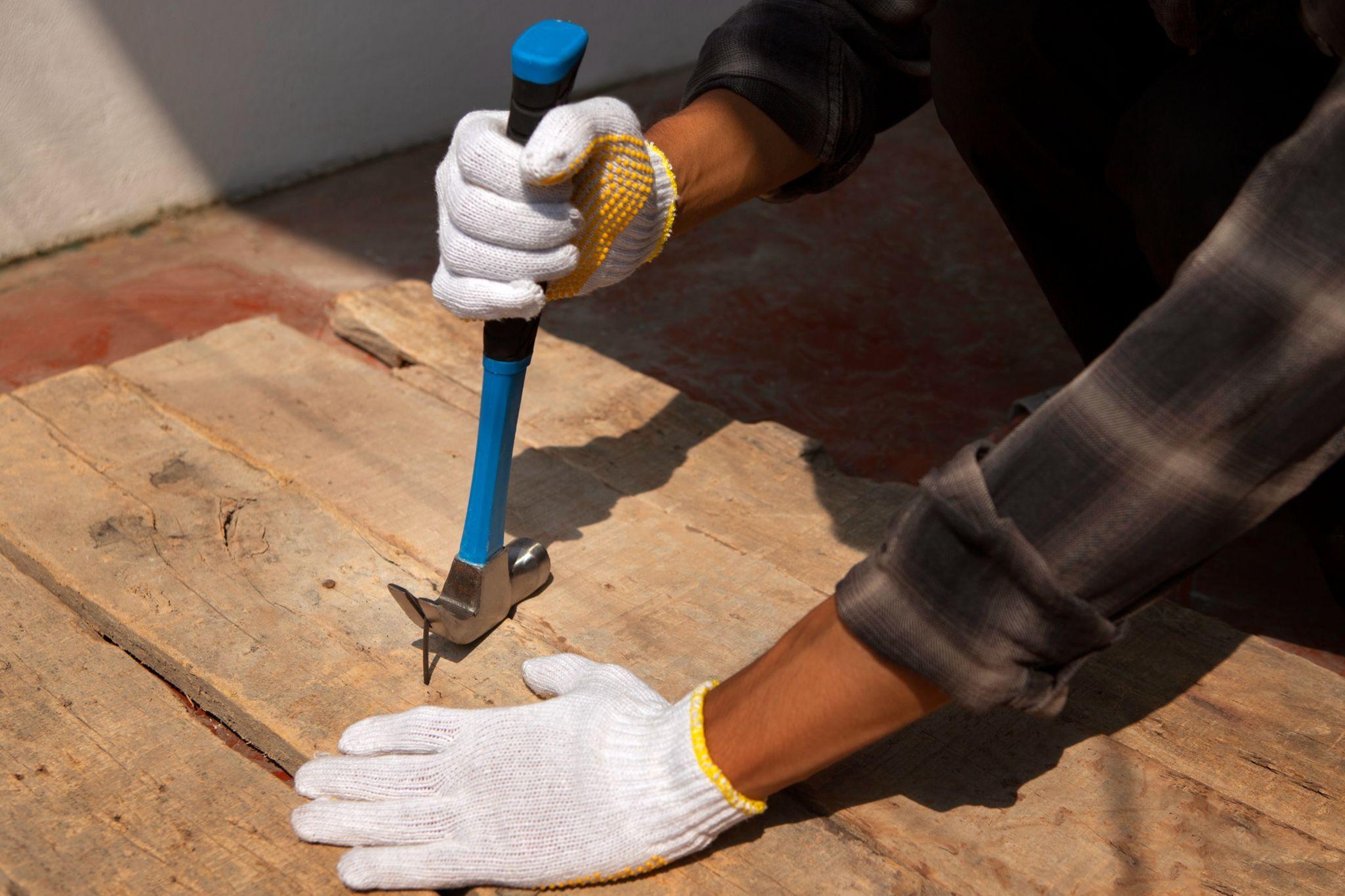
At HomeRiver Group, we’re more than property managers—we’re investment partners. With national reach and local market expertise, we streamline operations, reduce risk, and protect your properties like they’re our own. From tenant screening to maintenance oversight and financial reporting, our team delivers unmatched efficiency and peace of mind. Whether managing one home or a portfolio, we bring consistency, compliance, and confidence to every aspect of your rental business.
Understanding the difference between normal wear and tear and actual tenant damage is essential for protecting your property and handling security deposits lawfully. Whether you’re navigating your first lease turnover or refining inspection checklists, knowing what counts as expected aging versus neglect or abuse can help avoid disputes and maintain tenant trust. Every landlord should know how to make smart, fair decisions at move-out.
This blog will explore how to identify normal wear and tear versus tenant-caused damage, offer practical examples to guide your assessments, and share proactive strategies for documentation, communication, and deposit handling that protect your property and landlord-tenant relationships.
Differentiating Wear And Tear From Damage
Understanding the difference between normal wear and tear and tenant damage is crucial for anyone managing rental properties. It’s not just about protecting your investment—it’s about maintaining fair and transparent relationships with your tenants.
Normal Wear And Tear
Normal wear and tear refers to the gradual deterioration of a property that occurs over time, even when a tenant is caring for the home responsibly. Think of worn carpet in the living room, faded paint on the walls, or minor scratches on hardwood floors. These are the results of everyday use and are to be expected with any occupied property.
Tenant Damage
On the other hand, tenant damage results from negligence, misuse, or abuse. It can include things like large holes in the walls, broken windows, pet stains that soak through the carpet, or missing fixtures. Damage goes beyond what would reasonably happen through routine living and often requires substantial repair or replacement.
To help clarify the distinction, here are a few examples:
Wear & Tear: Loose door handles, minor scuff marks, moderate carpet wear, faded curtain fabrics.
Damage: Broken doors or locks, large holes punched in walls, heavily stained or burned carpet, missing or broken window blinds.
Maintaining clear documentation—like move-in/move-out checklists and regularly updated photographs—can be instrumental in determining the cause and nature of any changes. Setting proper expectations with tenants from the outset helps minimize disputes and ensures both parties understand what constitutes regular use and what crosses the line into damage.
Legal Implications For Landlords
Understanding the legal implications surrounding normal wear and tear versus tenant damage is crucial for any landlord. State laws and local ordinances often define these terms differently, and failing to distinguish between them accurately can lead to costly disputes, lost income, and even litigation. This is especially true in states like Texas. Landlord responsibilities in Texas—such as maintaining safe premises and promptly addressing repair requests—are clearly outlined and legally enforceable.
Security Deposits And Lawful Deductions
At the heart of many legal issues is the security deposit. Most jurisdictions stipulate that landlords can deduct reasonable costs for tenant-caused damage from the security deposit, but not for normal wear and tear. Misclassifying routine deterioration—like faded paint or worn carpeting—as damage could expose you to claims of unlawfully retaining a tenant’s funds. In some states, improper deposit withholding can result in penalties exceeding the initial amount.
The Power Of Proper Documentation
Documentation is your best ally. Conduct thorough move-in and move-out inspections, recording the property's condition with timestamps and photos. Use standardized checklists to build a case for any deductions from the deposit. This evidence is essential if a dispute arises and the tenant challenges your assessment. Courts tend to side with tenants when landlords cannot provide concrete proof that damages exceeded normal wear and tear.
Meeting Notice And Deadline Requirements
Finally, timely communication matters. Most states require landlords to send an itemized statement of deductions within a specific period after the tenant vacates. Failing to meet these deadlines can forfeit your claims and expose you to legal consequences. Staying informed on your state’s landlord-tenant laws is not just best practice—it’s vital for protecting your investments and reputation.
Guidelines For Deductions And Refunds
Navigating deductions and refunds on a security deposit can be one of the trickiest tasks for landlords, and a major concern for tenants. Striking the right balance boils down to clearly understanding what qualifies as normal wear and tear versus actual tenant damage.
Here’s how you can establish fair, professional practices:
Conduct Detailed Move-In And Move-Out Inspections
Always complete a thorough inspection with the tenant present at both move-in and move-out. Use a checklist and take date-stamped photos to document the unit’s condition. This helps create a transparent baseline for evaluating any changes.
Define “Normal Wear And Tear” vs. Damage
Normal wear and tear typically includes minor carpet wear, faded paint, or small nail holes from hanging pictures—essentially, the unavoidable deterioration from everyday living. On the other hand, tenant damage refers to broken windows, large holes in walls, pet stains, or missing fixtures. This distinction is crucial for determining legitimate deductions.
Itemize Deductions Transparently
When deduction is necessary, provide a clear, itemized statement to the tenant. List each damaged item, the cost of repair or replacement, and provide receipts or estimates. Transparency helps reduce disputes and builds trust.
Comply With State And Local Laws
Be aware of regulations regarding timeframes for returning the security deposit and any limits on allowable deductions. Many jurisdictions require that deposits (minus any lawful deductions) be returned within a specific period, often 14 to 30 days after the tenant vacates. If you want to know how long a landlord has to fix something in Florida, it's generally within 7 days for essential issues, making prompt attention a legal necessity.
Communicate Early And Often
If you spot a potential issue during a mid-lease inspection, communicate with the tenant sooner rather than later. Proactive dialogue allows tenants to address minor issues before they become major problems—and can minimize surprises when it’s time for move-out.
Adhering to these best practices can help ensure that deductions and refunds related to normal wear and tear are handled professionally, minimizing misunderstandings and fostering a positive renting experience for both parties.
Importance Of Move-In And Move-Out Inspections
Thorough move-in and move-out inspections are fundamental to safeguarding your rental property and maintaining a transparent relationship with your tenants. A well-documented inspection at the start and end of a tenancy creates a clear benchmark for assessing the property’s condition over time.
Conducting Detailed Walkthroughs With Tenants
During the move-in inspection, it’s essential to walk through the space with your tenant, documenting the current state of each room—walls, flooring, appliances, fixtures, and everything in between. High-resolution photos or detailed videos provide valuable evidence for reference, helping distinguish normal wear and tear from actual tenant damage later on.
Using Records To Evaluate Changes At Move-Out
These initial records become indispensable when it comes time for the move-out inspection. Comparing the original documentation with the property’s present state makes it easier to identify which changes are due to ordinary use and which might require further action or deductions from the tenant’s security deposit.
Streamlining The Turnover Process
A systematic approach minimizes confusion and disputes, protecting both parties’ interests and ensuring a smoother turnover process. Ultimately, these inspections support efficient property management and keep your investment secure.
Best Practices For Property Repairs
Every successful landlord understands that maintaining a rental property isn’t just about fixing what’s broken—it’s about protecting your investment and providing a positive experience for tenants. How you approach repairs makes a real difference when it comes to distinguishing between normal wear and tear and tenant-caused damage.
Here’s how you can set yourself up for success:
Document Everything: Start by developing a clear system for move-in and move-out inspections, complete with timestamped photographs and written notes. Accurate records will help establish what preceded the tenancy and what occurred during a renter’s stay.
Create A Maintenance Timeline: Routine maintenance—like servicing HVAC systems or checking smoke detectors—reduces emergencies and extends the lifespan of your property’s assets. Stick to a schedule and communicate it to your tenants.
Communicate Expectations: Outline your repair and maintenance process in the lease agreement so tenants know how to report issues and what to expect regarding response time. This is especially important in states like Florida. Renters' rights in Florida for repairs are protected by law—landlords must handle essential repairs in a timely manner or risk legal consequences.
Use Qualified Vendors: Whether plumbing, electrical, or general maintenance, rely on licensed and insured professionals. This commitment to quality protects both parties and minimizes future breakdowns.
Respond Promptly: Address repair requests quickly. Fast responses prevent minor problems from evolving into costly repairs and help maintain trust between you and your tenants.
Distinguish Wear From Damage: Normal wear and tear is expected over time—scuffed paint, slightly worn carpet, or fading from sunlight. More significant damage, like broken fixtures or holes in walls, is usually a tenant’s responsibility. Make these distinctions clear to your tenants to avoid disputes down the road.
Maintain Written Records: Document the date, nature of work, cost, and vendor used every time a repair is made. This provides transparency and valuable proof in case you need to justify deductions from a security deposit.
Final Thoughts
Navigating the line between normal wear and tear and tenant damage is one of the most important skills you can develop as a landlord. Properly distinguishing between the two helps you maintain your property’s value, protect your investment, and uphold a reputation for fairness and professionalism. Clear documentation, thorough move-in and move-out inspections, and regular communication lay the groundwork for smoother resolutions and better tenant relationships.
At HomeRiver Group, we combine exceptional service with local expertise to help you set the right expectations with your tenants, enforce lease terms fairly, and streamline maintenance and repairs—all under one roof. Your property is our priority. Trust HomeRiver Group to manage the nuances of property care and tenant relations so you can focus on what matters most: growing your investment and fostering positive rental experiences.
Connect with our team for questions or tailored property management solutions. Let’s ensure your property is protected today and for the long term.
Read also:
How A Cash-Out Refinance On Rental Property Can Boost Your Portfolio
Should You Rent Or Sell An Inherited House? A Smart Owner’s Guide
Frequently Asked Questions About Normal Wear And Tear
What defines normal wear and tear?
Normal wear and tear refers to the natural and expected decline of a property’s condition due to everyday use. It happens over time, even when tenants take care of the property. At HomeRiver Group, we understand this as the gradual deterioration that comes with simply living in a home, such as faded paint, minor scuffs, and worn-out fixtures.
What are examples of normal wear and tear?
Common examples include minor carpet wear from foot traffic, loose door handles, fading paint or wallpaper, small nail holes from hanging pictures, and worn-out appliance seals. These are signs a property has been lived in, not neglected or damaged.
Can a landlord charge for normal wear and tear?
No, landlords cannot charge tenants for normal wear and tear. Legally and ethically, these costs are a standard part of property management. At HomeRiver Group, we ensure our clients understand the difference between unwarranted deductions and fair tenant responsibility.
How can landlords differentiate between wear and tear and damage?
The key difference is intent and neglect. Wear and tear is the unavoidable result of time and use; damage is avoidable and often the result of abuse, misuse, or neglect. Landlords should look for signs of accidents, intentional harm, or neglect to identify actual damage.
What are examples of tenant damage?
Tenant damage includes broken windows, large holes in walls, missing fixtures, pet stains that can’t be cleaned, burns or large tears in carpet, and unauthorized painting or remodeling. These go beyond what’s expected from normal use and are the tenant’s responsibility.
Is carpet wear considered normal wear and tear?
Minor carpet wear—like light track marks and fading from sunlight—is considered normal wear and tear. However, large stains, burns, or tears from neglect or accidents usually count as tenant damage.
What happens if a tenant denies causing damage?
If a tenant denies responsibility, detailed documentation is essential. HomeRiver Group recommends keeping thorough move-in and move-out inspection reports—with time-stamped photos and signed checklists—to protect everyone’s interests. Open communication and clear evidence usually resolve such disputes.











